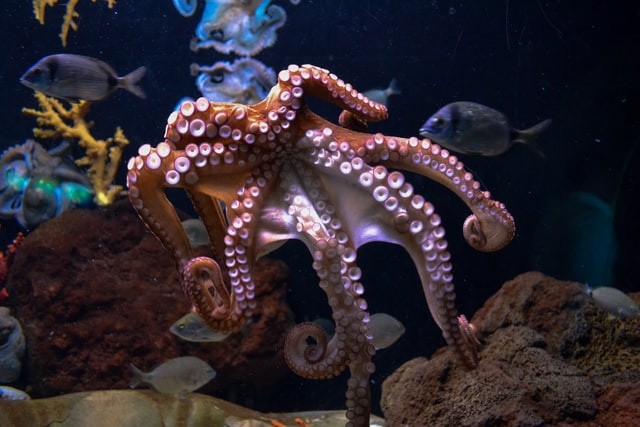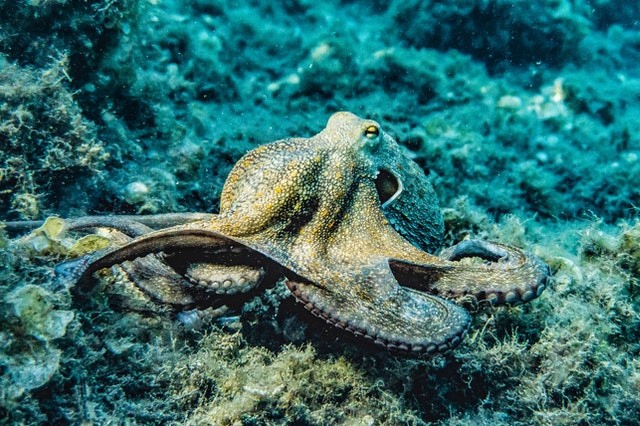A team of University of Sydney scientists videotaped common Sydney octopuses (Octopus tetricus) "throwing" shells, silt, and other seabed trash at other octopuses six years ago.
An examination of a video of octopuses "throwing" shells and silt off the coast of Australia shows that they deliberately target - and frequently strike - other octopuses. Females are the ones that toss most of the time, and they usually do it at pestering males.
Since they utilize the same "throwing" technique to discard food or build dens, it wasn't apparent whether they were genuinely targeting one another or if the other octopuses were just collateral damage at the moment.
Deeper Understanding

According to Additional Scientist, new footage and a deeper examination of the film show that octopuses tend to target and shoot at one other. The behavior, which focuses on animals of the same species and, in particular, the same population, is unusual in the animal kingdom, implying complex social dynamics among the astonishingly clever creatures.
When Godfrey-Smith explained this behavior in a 2015 lecture, he couldn't tell if they were deliberately targeting the other octopuses or if they were just striking them by mistake.
Related Article : World's 'Angriest' Octopus Attacks a Retired Lifeguard
Collecting Footage
The cameras saw fights, mating, and an unusual behavior dubbed "throwing" by the researchers. "It's difficult to put into words," Godfrey-Smith says.
Using their Tentacles
The octopuses utilize their tentacles to trap silt, algae, or shells under their bodies, angle their siphons, and blast a jet of water towards the projectiles, propelling them up to several body lengths.
Now that the crew has other footage, a comprehensive analysis has found variations between the throws aimed at others and those aimed at cleaning the den, suggesting that the octopuses are actively targeting people.
Throwing Things at Males
One female octopus, for example, flung silt ten times at a male from a nearby cave who was seeking to mate with her in 2016. She smacked him five times. Godfrey-Smith adds, "That sequence was one of the ones that persuaded me [it was deliberate]."
The guy attempted to "duck" on four of these times, albeit he didn't always succeed. He predicted the throws from the female's motions on two occasions and began ducking before the silt was thrown at him.
The octopuses were more likely to throw silt than shells when attacking others, and their throws were also more powerful.
Defense from Advances
Furthermore, during den-building, throws were almost always aimed between the front two tentacles. On the other hand, the octopuses aimed their throws between the first and second tentacles on the left or right when throwing at others. "That implies some targeting," Godfrey-Smith adds.
The researchers did witness one octopus hurl a shell towards - and strike - another octopus by flinging it with a tentacle like a frisbee instead of pushing material with its siphon on one occasion.
Animals Throwing Things
While many wild animals toss or push objects at other creatures, only a few, such as chimps, are known to attack members of their species. "It's rather uncommon. "Throwing things at other members of the same population is quite rare," Godfrey-Smith explains.
On two occasions, an octopus collided with a fish, one of which looked to be an accident. On a few occasions, the animals aimed at the camera, striking the tripod twice.
Frustrated Rejected Males

The crew hasn't witnessed any targeted octopus attack or hurl anything back, although the tossing looks to be utilized as a kind of assault. Furthermore, after intensive social encounters, certain throws are aimed towards space rather than at another octopus, suggesting that the animals are releasing their displeasure.
After a male's attempts on a female were refused, he flung a shell randomly and changed color in another example.
For more animal news, don't forget to follow Nature World News!
© 2025 NatureWorldNews.com All rights reserved. Do not reproduce without permission.





